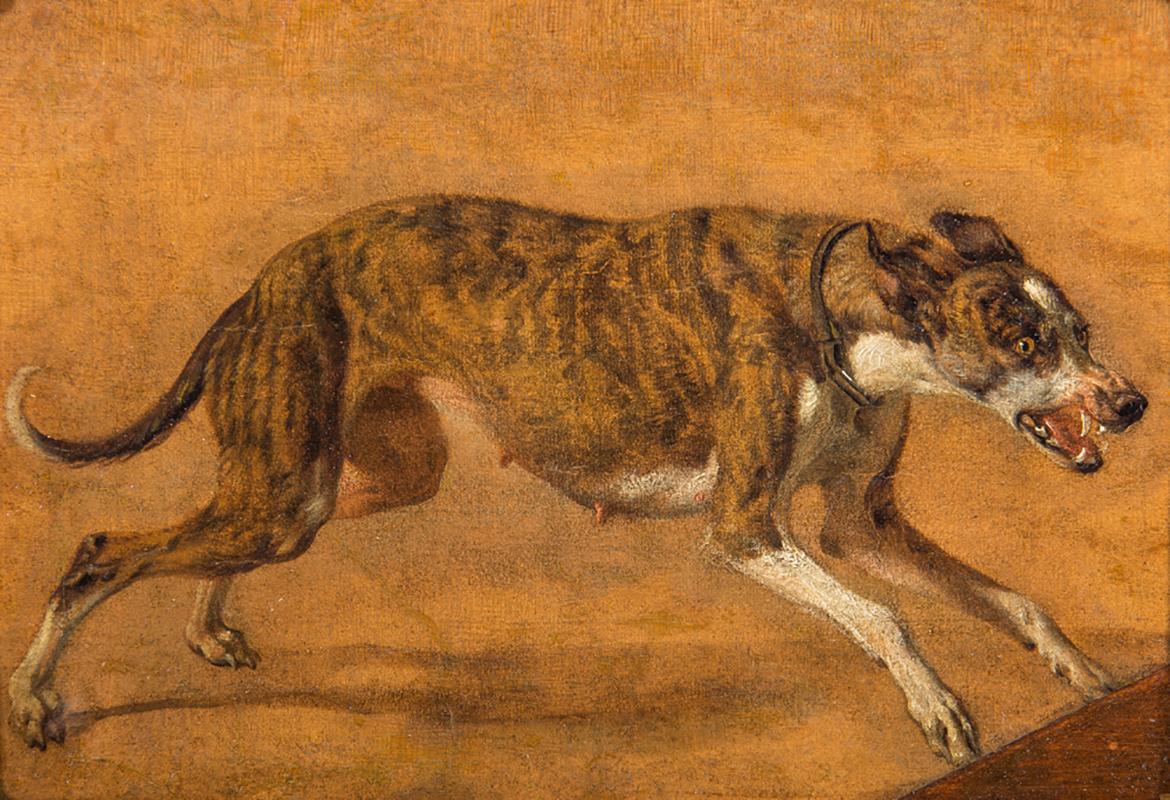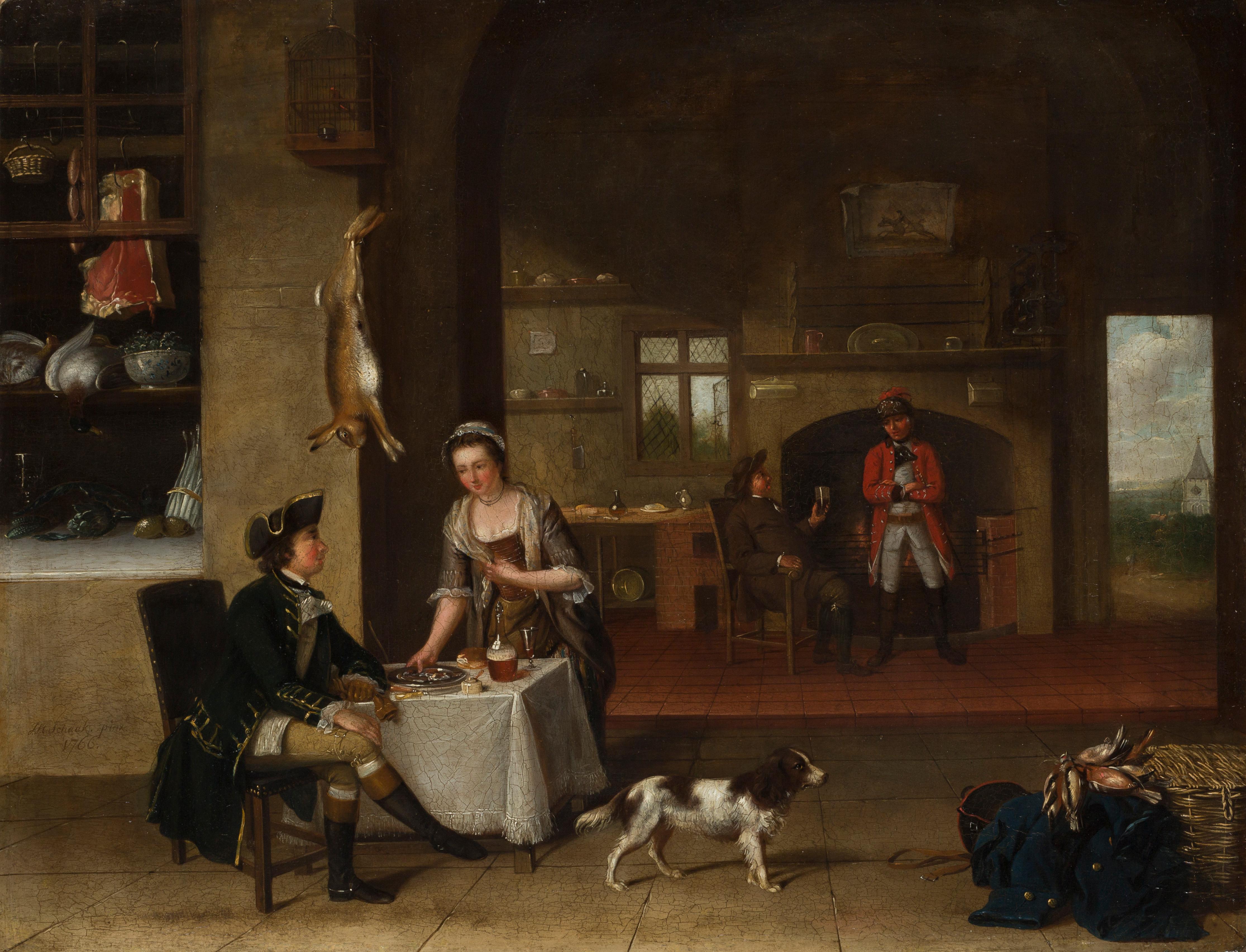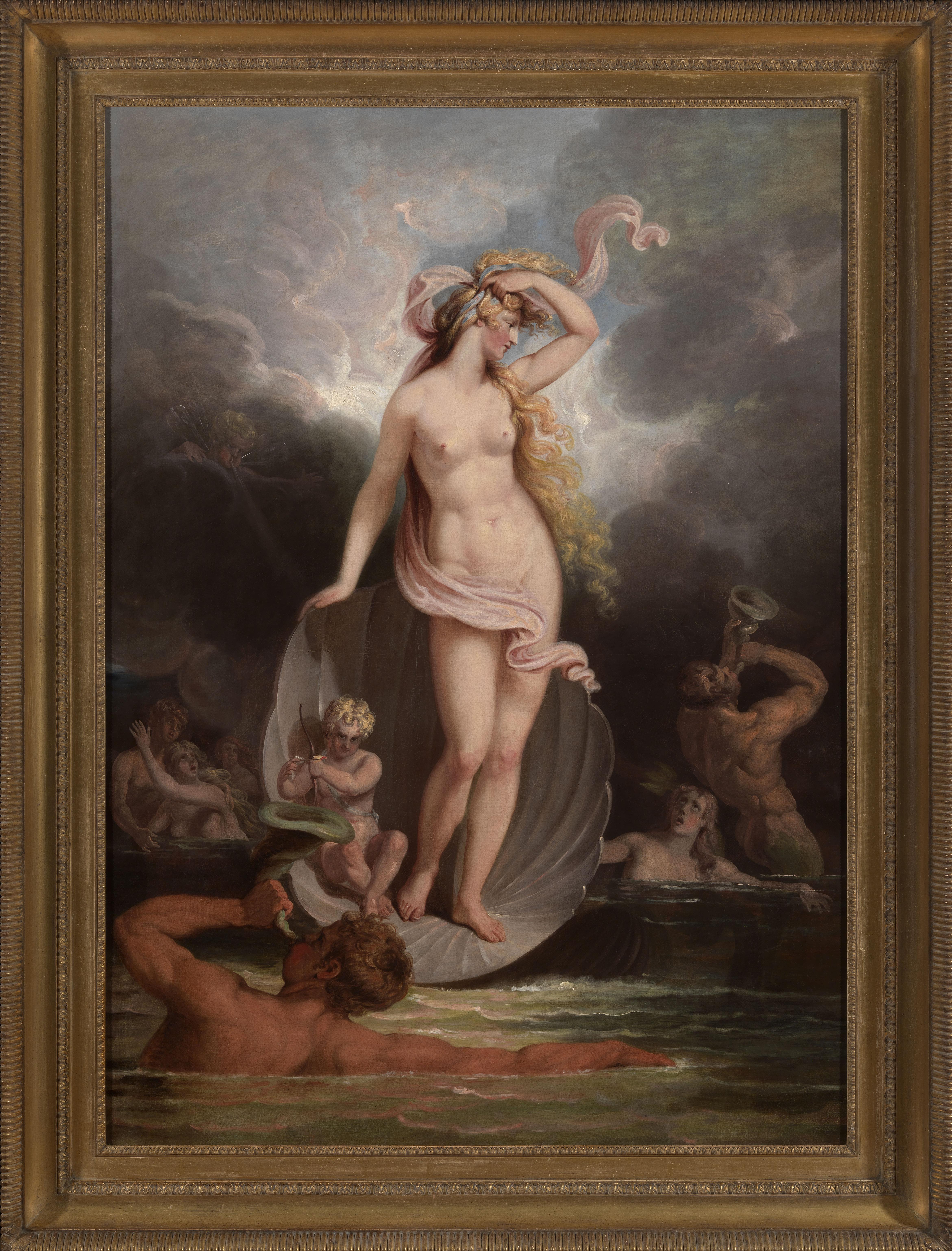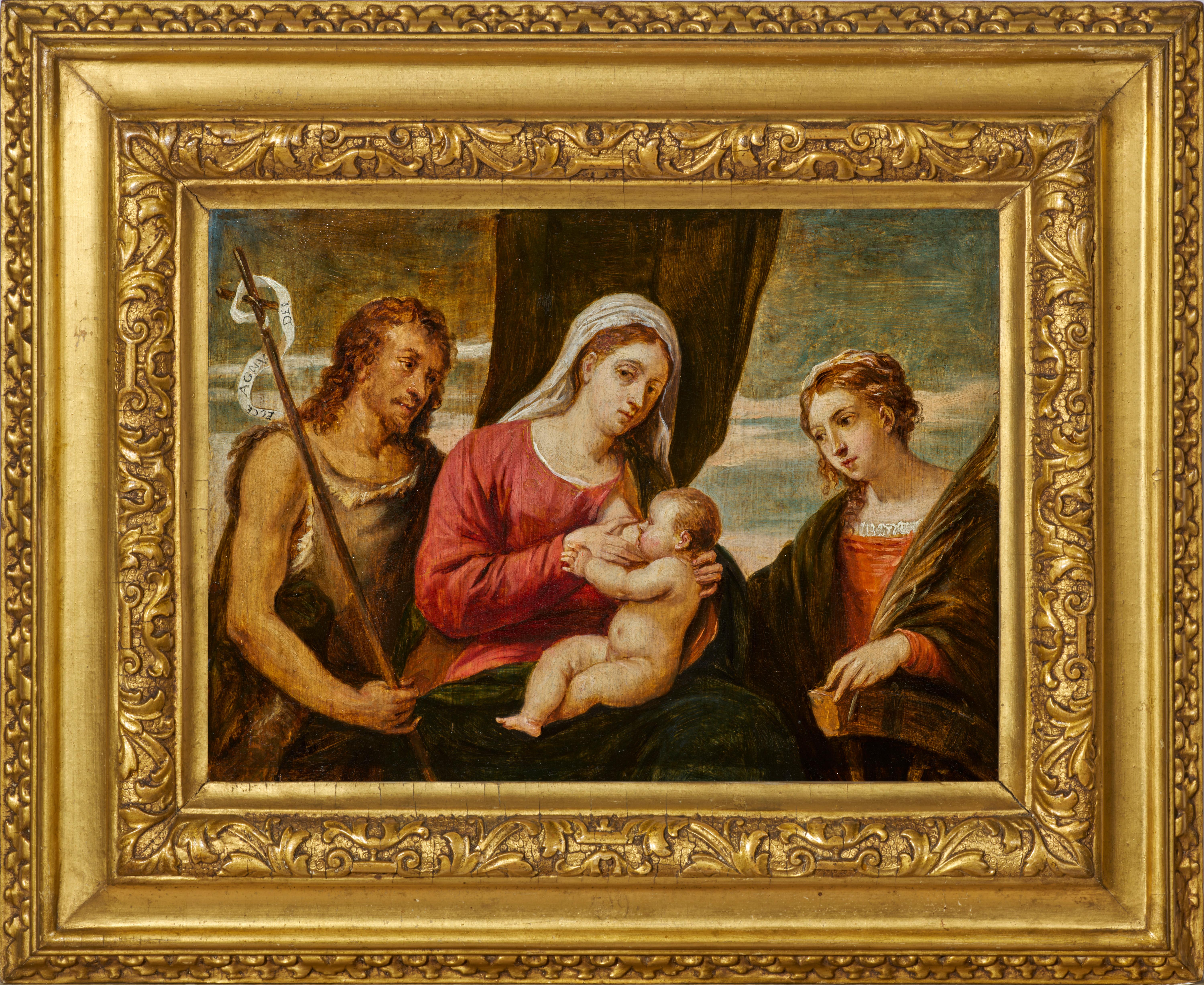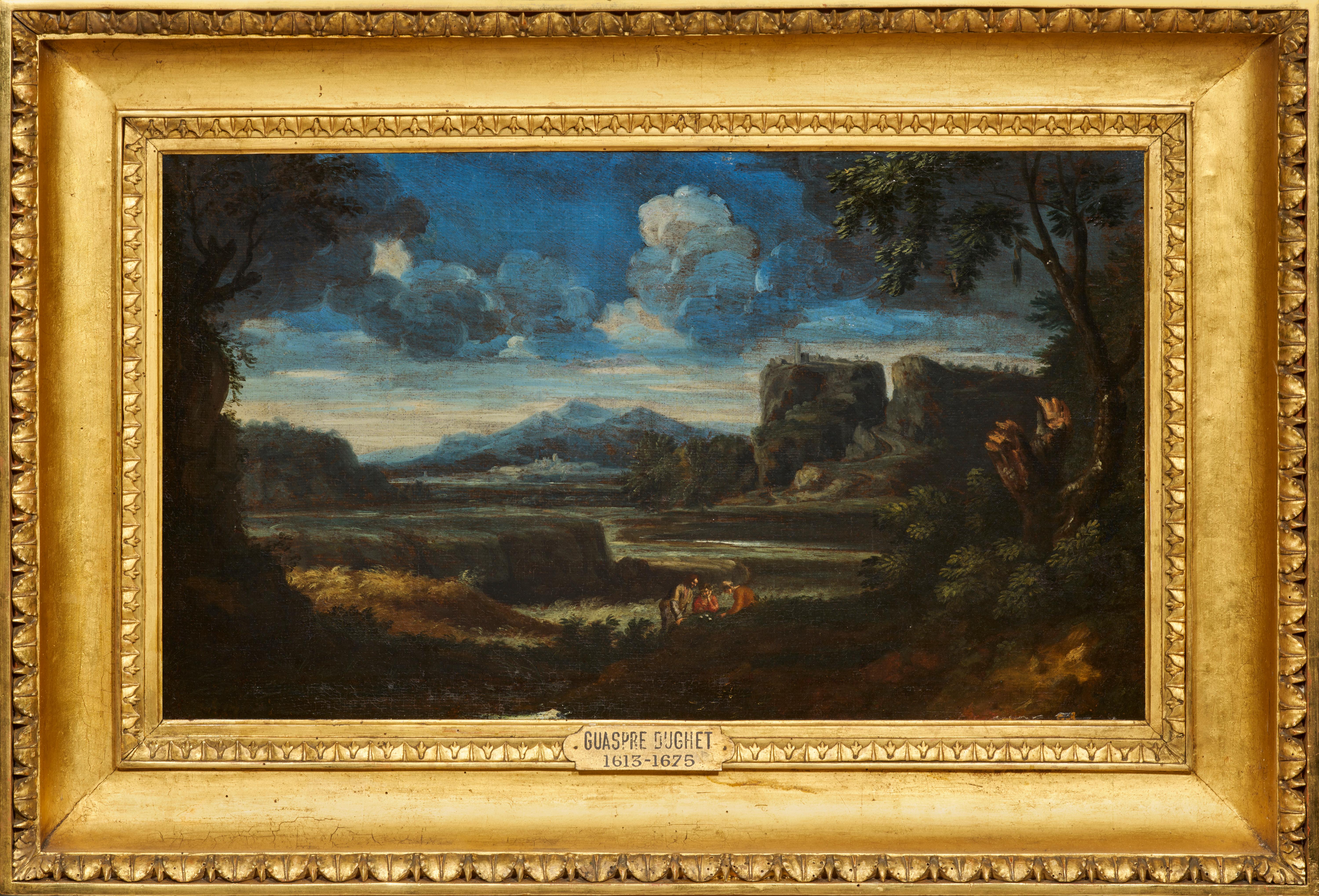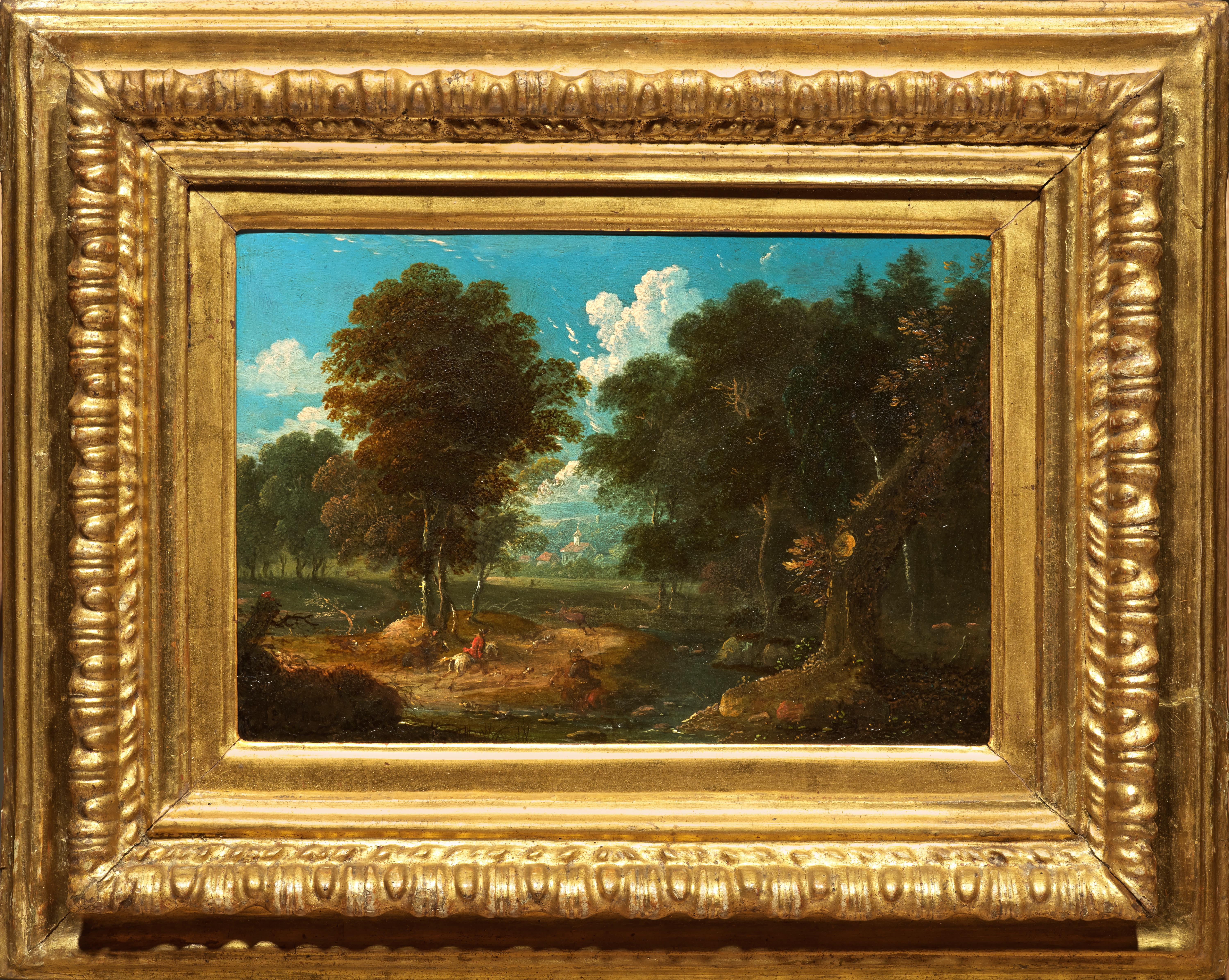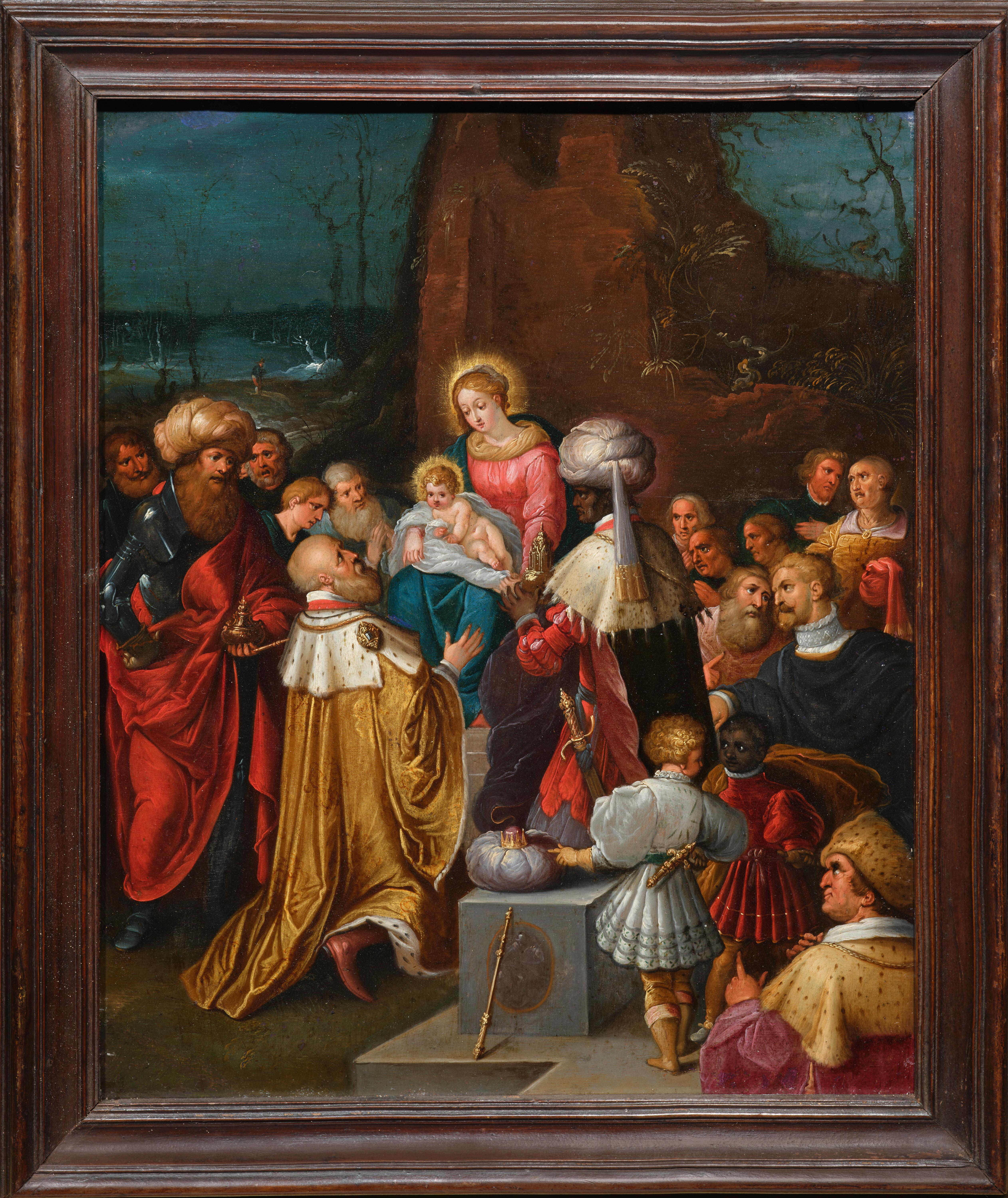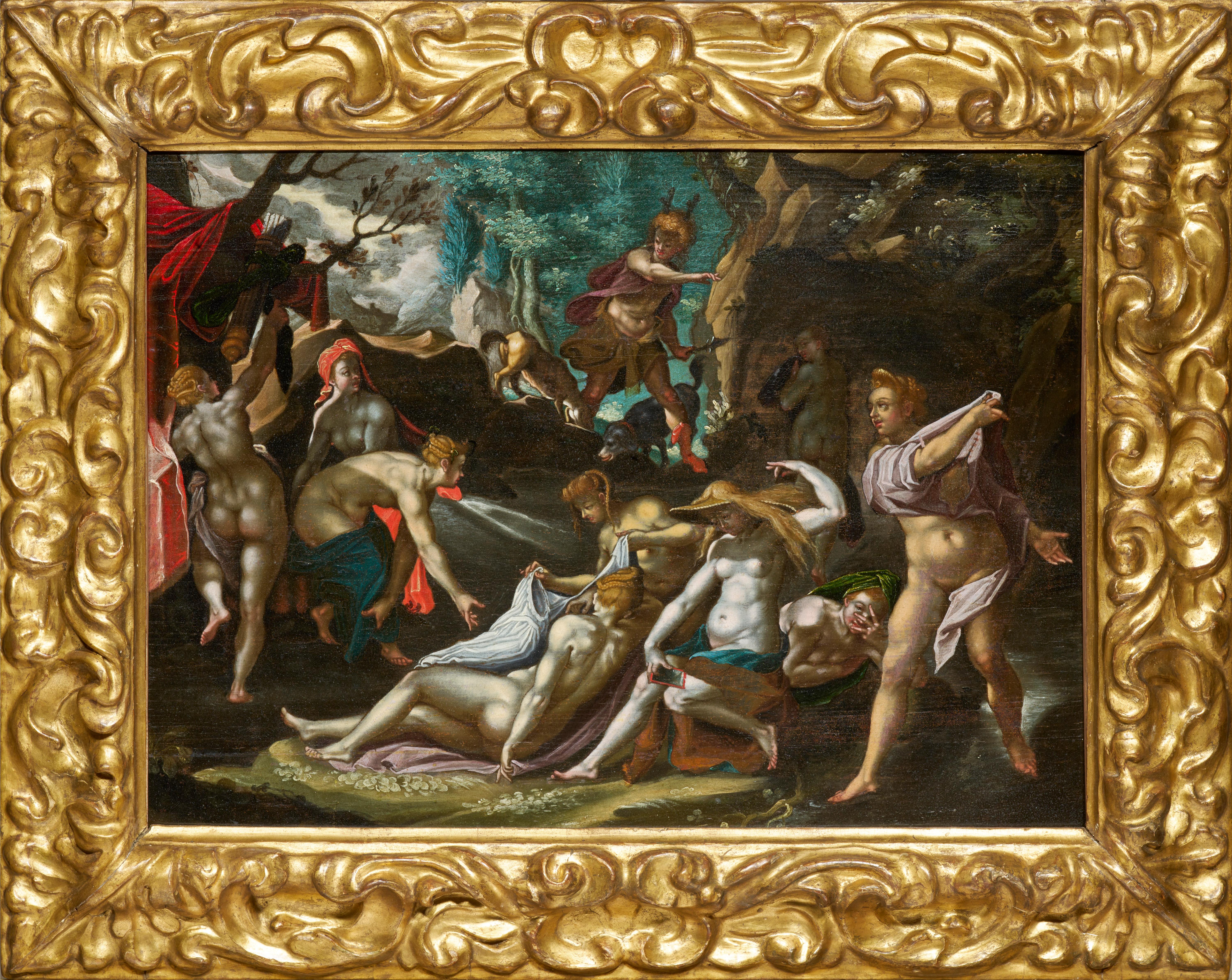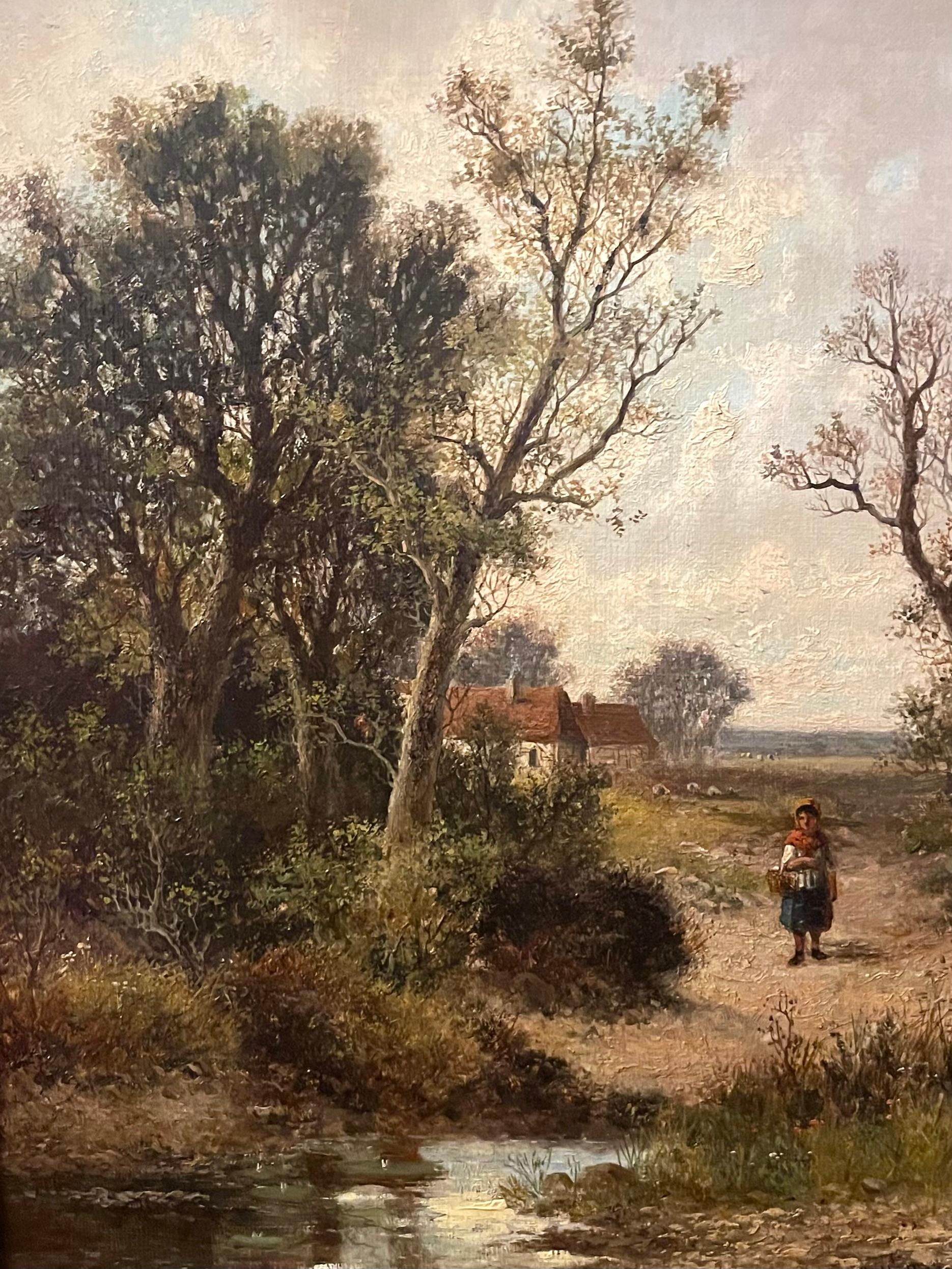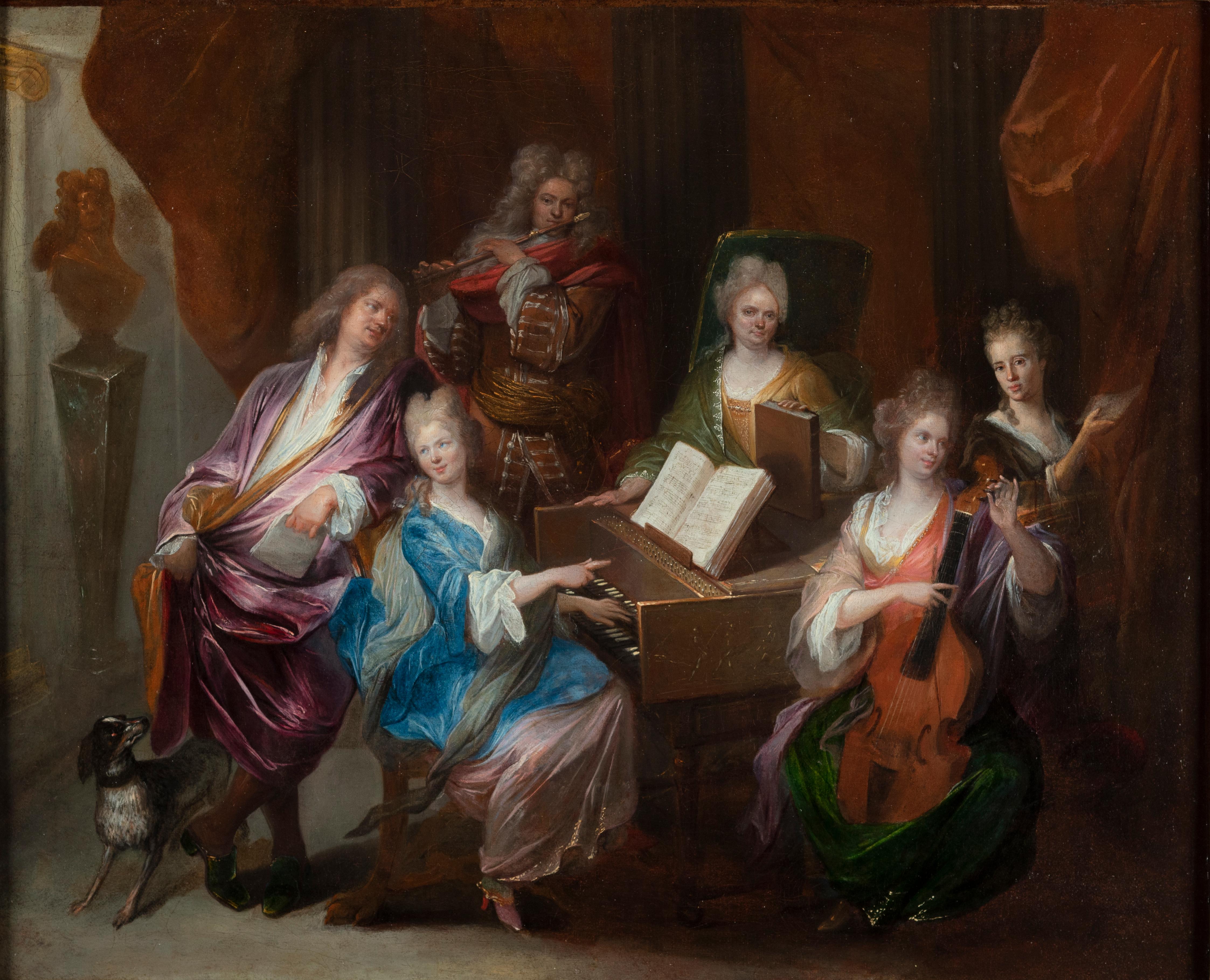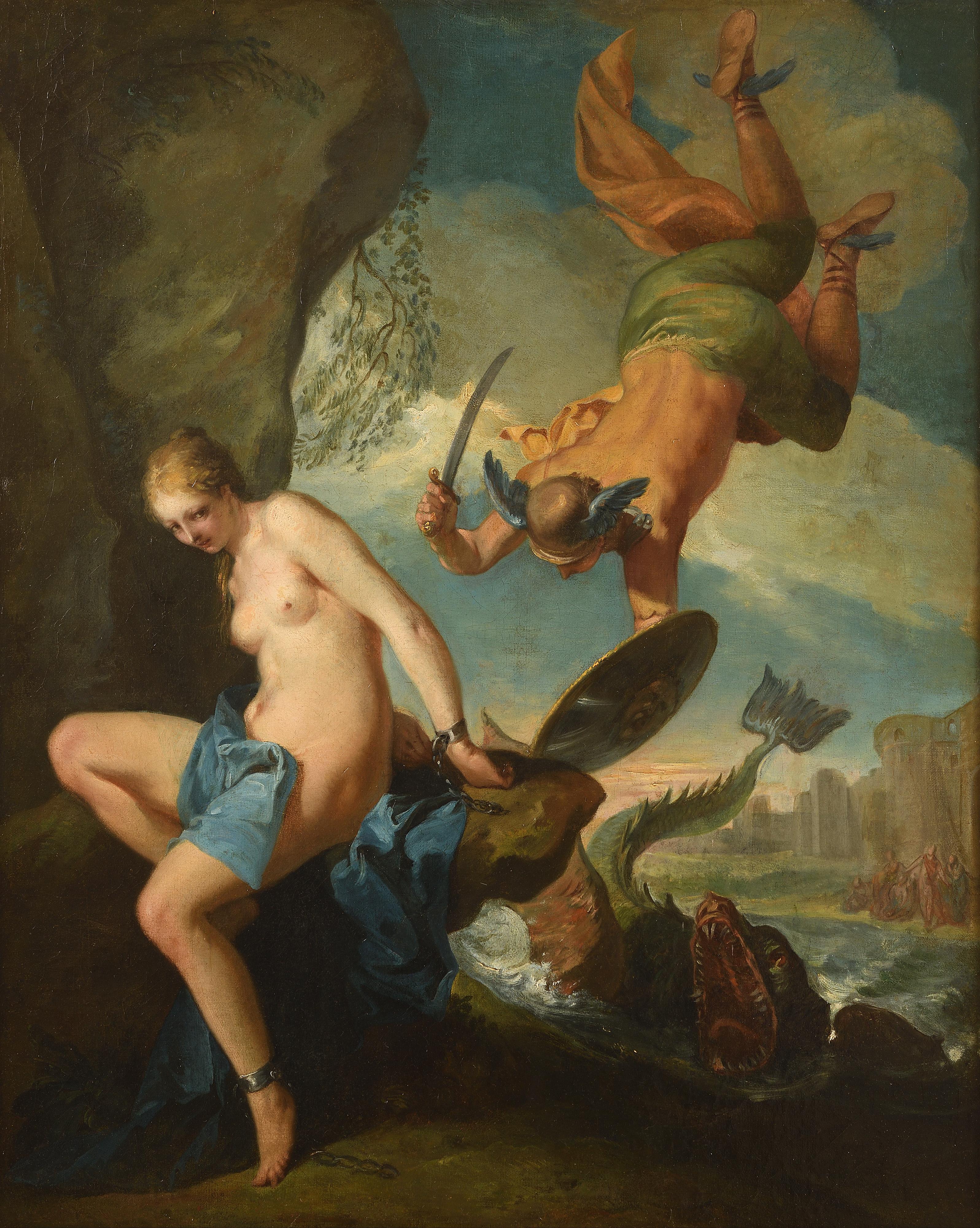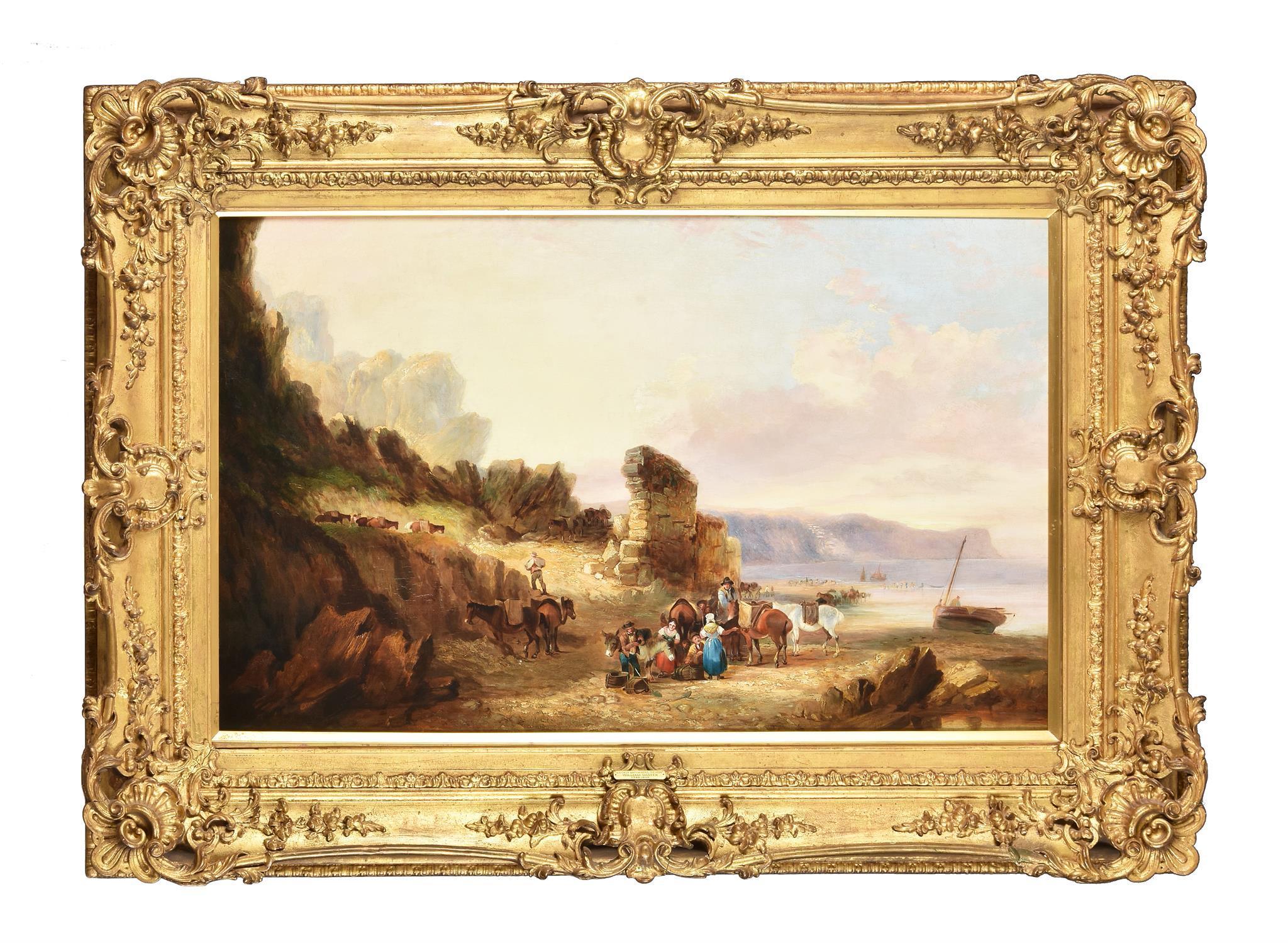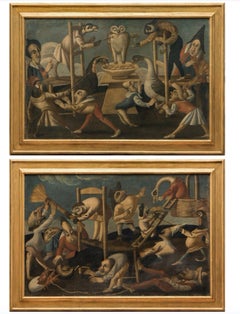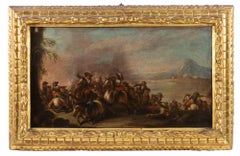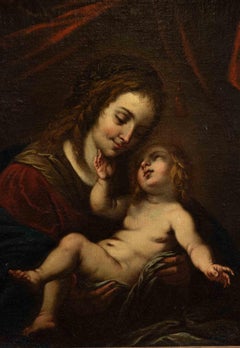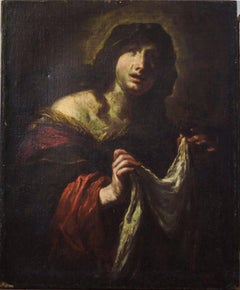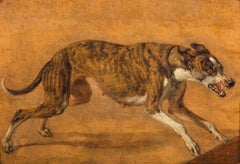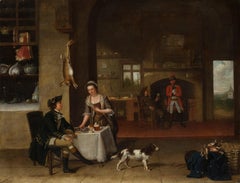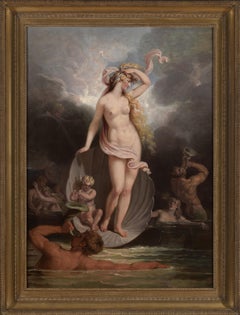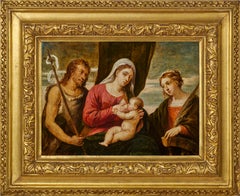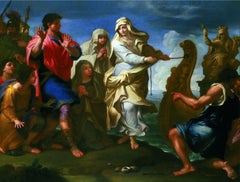
Claudia and Cybele - Oil Painting Attributed to G.A. Grecolini - 1720 ca
View Similar Items
Want more images or videos?
Request additional images or videos from the seller
1 of 5
Claudia and Cybele - Oil Painting Attributed to G.A. Grecolini - 1720 ca1720 ca
1720 ca
$35,768.56List Price
About the Item
- Attributed to:Giovanni Antonio Grecolini
- Creation Year:1720 ca
- Dimensions:Height: 20.08 in (51 cm)Width: 26.38 in (67 cm)Depth: 0.04 in (1 mm)
- Medium:
- Movement & Style:
- Period:1720-1729
- Framing:Framing Options Available
- Condition:Insurance may be requested by customers as additional service, contact us for more information.
- Gallery Location:Roma, IT
- Reference Number:Seller: M-1172211stDibs: LU65037855592
About the Seller
4.9
Platinum Seller
Premium sellers with a 4.7+ rating and 24-hour response times
1stDibs seller since 2017
7,594 sales on 1stDibs
Typical response time: 2 hours
Authenticity Guarantee
In the unlikely event there’s an issue with an item’s authenticity, contact us within 1 year for a full refund. DetailsMoney-Back Guarantee
If your item is not as described, is damaged in transit, or does not arrive, contact us within 7 days for a full refund. Details24-Hour Cancellation
You have a 24-hour grace period in which to reconsider your purchase, with no questions asked.Vetted Professional Sellers
Our world-class sellers must adhere to strict standards for service and quality, maintaining the integrity of our listings.Price-Match Guarantee
If you find that a seller listed the same item for a lower price elsewhere, we’ll match it.Trusted Global Delivery
Our best-in-class carrier network provides specialized shipping options worldwide, including custom delivery.More From This Seller
View AllThe Inappetent Owl - Grotesque Scene with Owl and Swan - Late 17th Century
Located in Roma, IT
Two masterpieces by the Master of the Fertility of the Egg, nearly impossible to find in homogeneous pairs on the private market, both in terms of style and dimensions.
They represen...
Category
Late 17th Century Old Masters Figurative Paintings
Materials
Canvas, Oil
Battle Scene - Painting - 18th Century
Located in Roma, IT
Battle Scene is an original old masters' artwork realized in the 18th century.
Mixed colored oil painting on canvas. The artwork includes frame: 58 x 90 cm.
Category
18th Century Old Masters Figurative Paintings
Materials
Oil
Virgin with Child - Painting by Theodor Mathon - 17th Century
Located in Roma, IT
Virgin Mary and Jesus is an original old masters' artwork realized by the Flemish painter Theodor Mathon (1606-1676) in the 17th century.
Mixed ...
Category
17th Century Old Masters Figurative Paintings
Materials
Oil
Saint Veronica
By (After) Simone Pignoni
Located in Roma, IT
18th c. Italian school
Santa Veronica, after Simone Pignoni.
Period copy by an unknown hand of the original oil painting by Pignoni. The original Pignoni painting was conserved in the Church of S. Eusebio in Cegliolo (Cortona) and now in the permanent collection of the Musée Fabre in Montpellier, France. In the Musée des Beaux-Arts of Marseille, there is another period copy by an unknown hand, considered of lesser quality than the current example.
Simone Pignoni (Florence, 1611-1698), one of the most important exponents of the Florentine School, was characterized by a soft touch. His formation with Francesco Furini...
Category
Late 17th Century Old Masters Figurative Paintings
Materials
Canvas, Oil
The Knight - painting - XVII century
Located in Roma, IT
The Knight is an original oil painting on canvas realized during the XVII century by an anonymous artist.
Provenance: Pecci-Blunt collection. Good condition...
Category
17th Century Old Masters Figurative Paintings
Materials
Canvas, Oil
Archery - Oil on Canvas by an Anonymous French Master end of 18th/Early 19th
Located in Roma, IT
Archery is a beautiful oil on canvas realized by an anonymous French artist of the end of XVIII century and the beginning of XIX century.
This marvelous genre scene is very detailed...
Category
Late 17th Century Old Masters Figurative Paintings
Materials
Oil, Canvas
You May Also Like
Study of a dog
Located in Amsterdam, NL
Study of a dog
Oil on paper laid down on panel, 17.5 x 25.5 cm
Provenance
Private collection, the Netherlands
Note:
We are grateful to Mr Fred Meijer for his attribution to Ludolf de Jongh
Ludolf de Jongh was the son of a shoemaker. When his father moved to Rotterdam, the young Ludolf decided to learn art rather than shoemaking and became a pupil of Cornelis Saftleven. Later he studied under Anthony Palamedes in Delft and still later with Jan van Bijlert in Utrecht.
In 1635 he travelled to France with Francis Bacon. Seven years later, in 1642, he returned to the Netherlands when he heard that his mother had fallen ill. He set up a shop in Rotterdam, and his earliest signed paintings date from that year.
According to Houbraken, his travels had caused him to speak French so fluently, that his parents had to learn French in order to speak with him.
De Jongh’s work shows a strong influence from the Utrecht school of Caravaggio admirers, especially Jacob Duck...
Category
Mid-17th Century Old Masters Animal Paintings
Materials
Paper, Oil, Wood Panel
A Tavern Interior, 18th Century Old Master, Figurative Oil Painting by Schaak
Located in Greven, DE
A Tavern Interior - 18th Century Old Master, Figurative Oil Painting by Schaak
Little is known about the artist J.S.C. Schaak. He was active in England as a portraitist between 1760-1770. His name indicates his German or Dutch origin. Especially portraits of generals...
Category
18th Century Old Masters Figurative Paintings
Materials
Copper
$13,345 Sale Price
20% Off
18th century allegorical painting of The Triumph of Beauty
Located in London, GB
Exhibited:
London, Royal Academy, 1800, no. 93
What was happening in British history painting in around 1800? In recent discussions of the emergence of a British School of history painting following the foundation of the Royal Academy in 1768, this is a question which is rarely posed and one which is not easily answered. Examination of surviving Royal Academy exhibition catalogues reveals a profusion of artists’ names and titles, few of which remain immediately recognizable, whilst endeavours to explain the impact of exhibition culture on painting - such as the 2001 Courtauld show Art on the Line - have tended to focus on the first and second generation of Royal Academician, rather than young or aspiring artists in the early nineteenth century. This makes the discovery and identification of the work under discussion of exceptional importance in making sense of currents in English painting around 1800. Executed by Edward Dayes...
Category
18th Century Old Masters Figurative Paintings
Materials
Canvas, Oil
Virgin and Child, a paiting by David Teniers the Younger after Palma Vecchio
By David Teniers the Younger
Located in PARIS, FR
Provenance:
Dukes of Marlborough Collection, Blenheim Palace until its sale at Christie's London on 26 July 1886 (lot 172)
English private collection until its sale at Christie's London on 11 December 1992 (lot 363)
Erna Weidinger Collection (1923 - 2021) - Austria
Literature :
Georg Scharf - A list of the pictures in Blenheim Palace - Catalogue raisonné Part 2 - London 1862 (page 166 - number 199 "after Palma Giovane")
Charles Davies...
Category
1750s Old Masters Figurative Paintings
Materials
Oak, Oil
Italian Landscape with Jack Players, a painting by Gaspard Dughet (1615 - 1675)
By Gaspard Dughet
Located in PARIS, FR
Here Gaspard Dughet offers us an idyllic vision of the Roman countryside. The stages follow one another in a perfectly structured composition, revealing here a lake, there travellers walking along, gradually leading our eye to the blue horizon. But behind its classical composition, this landscape is particularly interesting because of three anthropomorphic details that the artist has hidden, opening the way to a radically different interpretation...
1. Gaspard Dughet, a landscape artist in the light of Poussin
Gaspard Dughet was born on June 4th, 1615 in Rome where his father, of French origin, was a pastry cook. He was probably named Gaspard in honour of his godfather Baron Gaspard de Morant, who was, or may have been, his father's employer. His older sister Jeanne married the painter Nicolas Poussin (1594 - 1655) on September 1st, 1630. The young Gaspard was apprenticed with his brother-in-law at the beginning of 1631, which led his entourage to name him Gaspard Poussin. The first preserved works of the painter date from the years 1633-1634 and were painted in Poussin’s studio.
Around 1635, Gaspard Dughet became emancipated and began to frequent the Bamboccianti circle. In 1636, he became friends with the painter Jean Miel (1599 - 1656), but also with Pier Francesco Mola (1612 - 1666) and Pietro da Cortona (1596 - 1669).
This was also the time of his first trips throughout Italy. The painter, although of French origin, appears never to have visited France. In 1646 he settled permanently in Rome. A recognized painter with a solid book of orders, he remained faithful to landscape painting throughout his life, alternating between cabinet paintings and large decorative commissions, using both oil and fresco.
Nailed to his bed by rheumatic fever at the age of 58, he died on May 25, 1675.
2. Discovering an idealized landscape
Beyond a relatively dark foreground that takes us into the landscape, we discover a vast bluish horizon: a plateau surrounded by deep ravines advances to the right, overhanging an expanse of water that sparkles below. A road winds through a mountainous mass as if leading us to the fortress that crowns it; another town appears in the distance at the foot of three conical mountains.
The composition is rigorous, mineral, and structured by geometric volumes. The various stages in the landscape lead one to the next attracting the eye towards the horizon located in the middle of the canvas. The general impression is that of a welcoming and serene nature.
In many places the paint layer has shrunk, or become transparent, revealing the dark red preparation with which the canvas was covered and accentuating the contrasts.
Human presence is limited to three jack players, leaning against a mound in the foreground. Their long garments, which may evoke Roman togas, contribute to the timelessness of the scene.
Close examination of the canvas reveals two other travellers on the path winding between the rocks. Made tiny by the distance, their introduction in the middle register, typical of Dughet's art, lengthens the perspective.
While it is difficult to date the work of a painter who devoted his entire life to the representation of landscapes, it is certain that this painting is a work from his later years. The trees that occupied the foreground of his youthful compositions have been relegated to the sides, a stretch of water separates us from the arid mountains counterbalanced by two trees represented on the opposite bank. The introduction of this stretch of water in the middle of the landscape betrays the influence of the Bolognese and in particular of the Dominiquin (1581 - 1641)
A number of similarities with a drawing in the British Museum might suggest a date around 1656-1657, since, according to Marie-Nicole Boisclair , it has been compared with the Prado's Landscape with the Repentant Magdalene, painted at that period.
3. Three amazing anthropomorphic details
While some late Renaissance landscapes offer a radical double reading, allowing one to see both a face or a human body behind the representation of a landscape, it seems interesting to us to hypothesize that Gaspard Dughet had fun here by slipping in a few details that, taken in isolation, evoke human or animal figures.
We will give three examples, looking closely at a cloud, the trunk of a broken tree and the top of a cliff.
The main cloud could thus evoke a Christ-like face or that of an antique god...
Category
1650s Old Masters Landscape Paintings
Materials
Oil
Stag Hunting in the Vicinity of Nuremberg by a German Artist Peter von Bemmel
Located in PARIS, FR
This small landscape shows a hunting scene: two riders are chasing a stag with their dogs at the edge of a forest. Signed by Peter von Bemmel, it is typical of the production of this...
Category
1720s Old Masters Landscape Paintings
Materials
Copper
